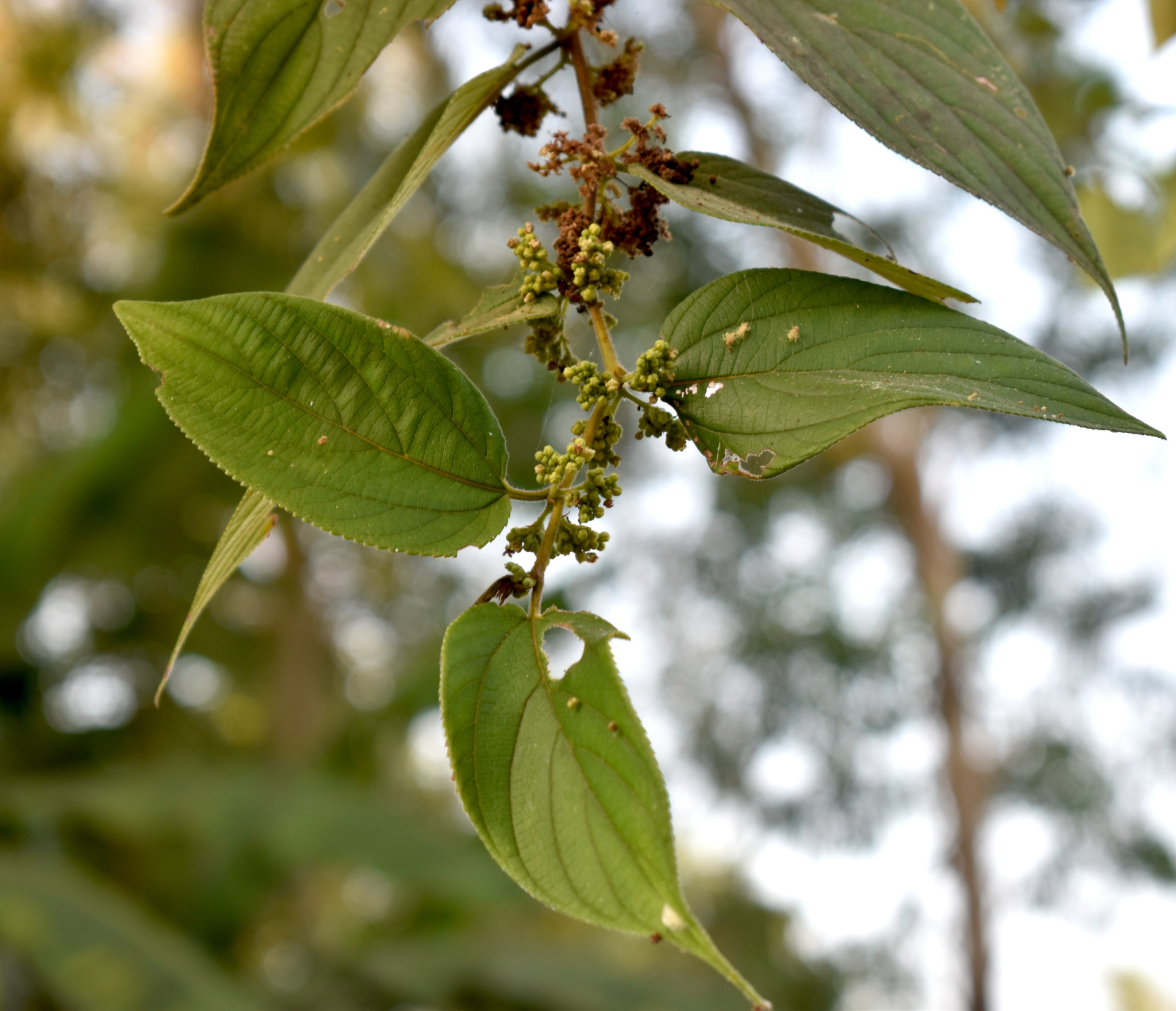Amathali

Scientific Name :
Trema orientalis (L.) Blume
Synonym(s) :
Celtis orientalis L.
Local/Common name(s) :
Amathali
Family :
Ulmaceae
Habit :
Tree
Flowering/Fruiting Time :
September-December
Habitat :
Dry and moist deciduous forests, also in the plains
Endemic :
No
Status (IUCN) :
Least concern (LC)
Distribution :
Tropical Africa, Asia and Australia
Nativity :
Indigenous
Uses :
Description (Morphology) :
Dioecious trees, to 15 m high, bark 0.6 cm, thin, greyish or bluish-green, rough, lenticellate; branchlets scabrous to adpressed pubescent. Leaves simple, alternate, 7.5-15 x 2.5-6 cm, ovate-lanceolate, ovate or oblong-lanceolate, apex acuminate, base obliquely cordate, margin serrulate, scabrid above, tomentose beneath, chartaceous, 3-5-ribbed from base, prominent; stipules lateral, cauducous; petiole 5-10 mm, slender, tomentose, grooved above; lateral nerves 3-4 pairs, pinnate, prominent, intercostae reticulate, prominent. Flowers unisexual, 3-4 mm across, greenish, in axillary fascicles or cymes; male flowers usually sessile; tepals 4 or 5, equal, 2 mm long, curved, ciliate; stamens 5; pistillode oblong; female flowers : tepals unequal, ciliate; ovary superior, sessile, 1-celled, ovate; style bifid, villous; stigma plumose. Fruit a drupe, 4 x 3 mm, globose, black; stylar tip persistent; seed globose.

